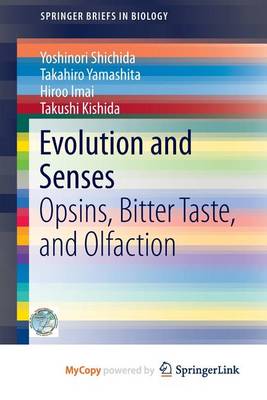SpringerBriefs in Biology
2 total works
Evolution and Senses
by Yoshinori Shichida, Takahiro Yamashita, and Hiroo Imai
Monkeys, Apes, and Humans
by Michael A. Huffman, Naofumi Nakagawa, Yasuhiro Go, Hiroo Imai, and Masaki Tomonaga
This book introduces to the reader unfamiliar with primatology in Japan three research projects representative of the unique multidisciplinary approach carried out by scientists at Kyoto University, the country’s premier institution for primate studies. The projects are all aimed at understanding the age-old questions, where did we come from, and what makes us unique or similar to our primate ancestors? The first chapter, by Naofumi Nakagawa, focuses on the cultural diversity of social behavior in the Japanese macaque. This chapter reviews research on primate culture, in particular the work on Japanese macaques, then presents what is arguably the first example of a culturally transmitted social convention in the species, called “hug-hug”. The second chapter, by Michael A. Huffman, introduces our current knowledge of self-medication in primates, based largely on a long-term study of wild chimpanzees at Kyoto University’s longest ongoing chimpanzee field in Africa, Mahale, in Tanzania. The suite of behavioral adaptations to parasite infections in chimpanzees is compared with our current knowledge of self-medication in other primates and other animal species. The third chapter, by Yasuhiro Go, Hiroo Imai, and Masaki Tomonaga, describes the ambitious efforts to combine cognitive science and genomics into a new discipline called “comparative cognitive genomics”. This chapter provides an overview of recent advancements in chimpanzee comparative cognition, the construction of a chimpanzee genomic database, and comparative genomic studies at the individual level, looking into factors affecting personality and individuality.

